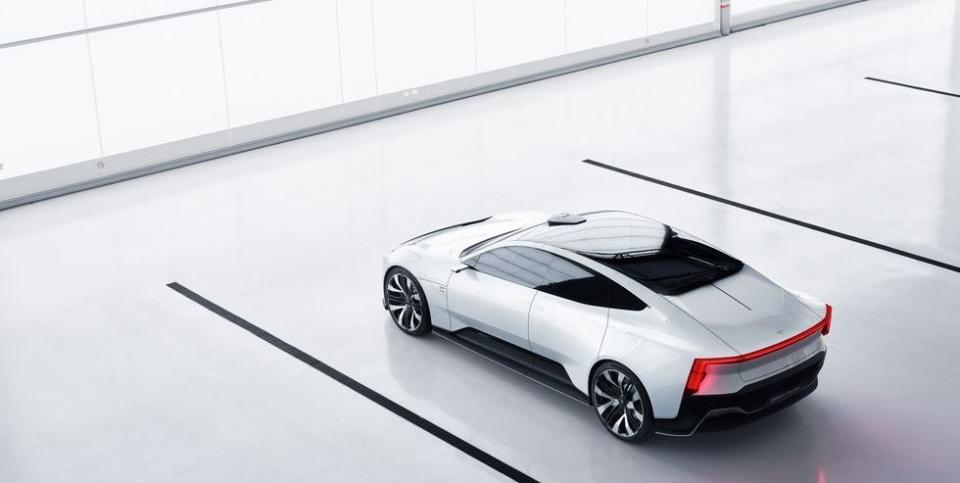The Precept Concept's Bold Styling Previews Polestar's Future

Since its inception as a separate automaker, Polestar has produced some stellar designs. The new brand—jointly owned by Volvo and Geely Holding Company—has taken Volvo's current design language and iterated on it, penning aggressive and sleek designs that signal the brand's focus on electric performance. But a new marque needs a new identity. It's not enough to borrow good designs from family brands—you need to break out.
Polestar knows that, which is why it's signaling a new era in design with this, the Precept concept. This particular design isn't slated for production, but it previews where the brand is going with upcoming models like the Polestar 3 SUV. And so while the overall car may not be important, the design changes are.
For instance, the Volvo "Thor's Hammer" headlights have been split by the bodywork, which itself is more rounded and dramatic than the Polestar 1 and Polestar 2. As the model line progresses, we'll see it diverge more and more from Volvo.
"I mean, we've taken big steps now," Max Missoni, Volvo's design director, told Road & Track. "But we don't want to break completely with some of the successful cues from Volvo because we see a big advantage with being associated with Volvo. As a brand, as a group, that gives us trust."
So while the Volvo lineage is evident, it's also taking advantage of the electric propulsion to break design norms. The front end, for instance, doesn't have a traditional air intake feeding a radiator. Instead, that space is used for what Polestar calls the SmartZone, a transparent panel housing many of the car's sensors for active safety systems.
There's also a roof-mounted LIDAR pod for enhanced machine vision. As for human vision, the Precept keeps with the grand concept-car tradition of replacing mirrors with cameras. Now that we've actually seen production cars with camera mirrors in Europe, though, it's not a far-fetched idea. A major part of Polestar's design philosophy, Missoni said, is using these breakthrough technologies to change up automotive design.
"If there is no reason to change your shape, you know, it's just entertainment," he said. "We really have so many influences now coming in now that there is no shortage of inspiration."
Polestar is also using the Precept to show off the future of its interiors. Sustainability is a big focus, with panels made from flax-based materials and carpets stitched from reclaimed fishing nets. Cork and recycled bottles coat the seats, too, which Polestar says contribute to an 80 percent reduction in plastic waste over conventional interiors.
And as is de rigueur for an EV concept, there's a massive screen dominating the dashboard, running the next generation of the company's Android-powered infotainment. But I'm more interested in one of the gimmicky details. According to the press release, the Polestar logo floats holographically inside a solid piece of crystal between the two rear-seat headrests.
Expect many of these design details—the divergent styling, the new interior direction, and key details like the SmartZone—to make their way onto the upcoming Polestar 3 SUV. More than anything, though, this represents the company's long-term commitment to sustainability.
"The Precept is a bit of a manifesto in that direction," Missoni said.
You Might Also Like

 Yahoo Autos
Yahoo Autos 